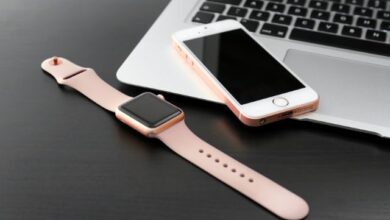How to do 3d printing with MF3 technology

How to do 3d printing with MF3 technology- Even while 3D printing technology is constantly evolving, its print times and resolution remain rather slow. By using several small print nozzles concurrently rather than a single large one, a new technique may be able to assist.
What is 3D Printing?
In its most basic form, three-dimensional printing is a manufacturing technique in which material is applied one layer at a time to create an object in three dimensions. (This is referred to as an additive process since the thing is constructed from the ground up as opposed to subtractive processes, which include cutting, drilling, milling, or otherwise removing material.)
Although 3D printers use a variety of materials (like plastic or metal) and processes (see “How Does 3D Printing Work?” below), they all have the ability to transform digital files containing three-dimensional data into physical objects, whether they were produced using a computer-aided design (CAD) or computer-aided manufacturing (CAM) programme or from a 3D scanner.
Is 3D Printing Even Printing?
The answer is yes, though not in the way that printing has typically been understood. The production of printed content, publications, or pictures, as well as producing by impression, are at the centre of the pertinent Webster’s definitions of “printing” (the application of pressure). Both definitions are fairly accurate for 3D printing. But from a technological standpoint, 3D printing is a development of conventional printing, which involves applying a layer of material (often ink).
Typically, it is so thin that its height is invisible (though with solid ink printers, it is somewhat thicker). Through the application of numerous layers, 3D printing significantly increases that height. Expanding the definition of printing to include the creation of three-dimensional things in this way would be logical.
How Does 3D Printing Work?
The technology used by 3D printers are similar to those of conventional printers. Fused deposition modelling (FDM), also known as fused filament fabrication, is the most well-known (FFF). It involves melting and layering the deposition of a filament made of polylactic acid (PLA), ABS, or another thermoplastic through a heated extrusion nozzle. The first 3D printers to hit the market were created by Stratasys with assistance from IBM in the mid-1990s. These printers employed FDM, a word that Stratasys has trademarked.
Stereolithography is an additional 3D printing process. In it, the intended item is traced on the surface of a photopolymer that is ultraviolet-sensitive using a UV laser. Everywhere the beam meets the polymer, it hardens, and the beam “prints” the object layer by layer in accordance with the instructions in the CAD or CAM file it is using.
A variation on it is 3D printing using a digital light projector (DLP). In this procedure, a liquid polymer is exposed to projector-generated digital light. Layer by layer, the polymer becomes harder until the thing is constructed, at which point the liquid polymer is drained off.
Multi-jet modelling is a type of 3D printing that resembles an inkjet and sprays coloured glue-like binders onto consecutive layers of powder to create the item. This is one of the quickest techniques and one of the few that permits printing in several colours.
A typical inkjet can be modified to print using substances other than ink. DIYers with a bit of ingenuity have modified or created print heads—typically piezoelectric heads—to operate with a variety of materials, even printing the print heads on other 3D printers in some cases! 3D print heads are available from companies like MicroFab Technologies (as well as complete printing systems).
Using a strong laser, selective laser sintering (SLS) joins together glass, ceramic, metal, or plastic particles. The residual material is recycled after the task is finished. You guessed it: an electron beam is used in electron beam melting (EBM) to gradually melt metal powder. Titanium is frequently synthesised with EBM for both aeroplane parts and medicinal implants.
Depending on the method, 3D printers can use a wide range of materials, such as ceramics, plaster, glass, and even edibles like cheese, icing, and chocolate! Metals, such as stainless steel, solder, aluminium, and titanium, plastics and polymers, including composite materials that mix plastics with metals, wood, as well as other materials (See our overview of 3D printer filament kinds.)
What Are the Benefits of 3D Printing?
Using 3D printing, designers can swiftly transform ideas into 3D models or prototypes (a process known as “rapid prototyping”) and carry out last-minute design adjustments. It enables producers to make goods as needed rather than in bulk, increasing inventory control and utilising less warehouse space. People who live in remote areas can create items that are normally unavailable to them.
From a practical sense, 3D printing can save money and material compared subtractive procedures, as very little raw material is wasted. It also has the potential to transform the manufacturing industry by allowing consumers to download data to print even the most complicated 3D objects—like, for instance, electronic devices—at home in the future.
A three-dimensional item is constructed using successively deposited layers of molten plastic or resin that fuse with one another as they cool in a traditional FDM (fused deposition modelling) 3D printer. The nozzle is moved over the print bed during printing using a device known as a gantry.
It goes without saying that printing huge objects in this way can be time-consuming. Use of a bigger nozzle can improve the process’s speed by allowing for the simultaneous deposition of more material, however doing so results in larger individual material layers giving the end product a rougher, lower-resolution appearance.
Multiplexed Fused Filament Fabrication (MF3) fills that need.
The technique was created by a team at Rutgers University in New Jersey and includes a number of little nozzles that are all installed on a single gantry. Each nozzle individually extrudes or withholds stuff as the gantry moves, depending on where it is in relation to the object being printed.
As a result, various parts of the product are being printed simultaneously using relatively thin layers of material. As a result, the item is printed quickly and with a high level of resolution.
The basis of our system, according to principal researcher Jeremy Cleeman, “is a control software that we have built to manage material deposition for each nozzle separately, even if all nozzles follow the same motion trajectory.” “To better understand bonding at various section interfaces, we also created a thermal simulation. We can make sure that the deposited filament will correctly connect to the nearby, previously cooled filament by adjusting a number of factors.”
MF3 can print numerous little objects at once in addition to printing a single huge object. As an extra advantage, the software modifies the printing procedure if one of the nozzles fails so that one or more of the other nozzles can pick up the slack.
As long as those components are there, according to Cleeman, this may be a game changer for the business. “We have more experiments to do to determine the strength and geometric potential of the pieces we can build,” he added.
The journal Additive Manufacturing just published a report on the study.
Although all nozzles follow the identical path, the fundamental component of our technique is the control software we created to individually control material deposition for each nozzle. In order to comprehend the bonding that takes place at the interfaces of various parts, we have also constructed thermal models. We can make sure that the deposited fuse will link to the adjacent pre-cooled fuse by carefully adjusting the relevant parameters.
- This is how WiFi 7 will be and how it will improve current technology
- Read The Chat That Made Google Fire Engineer Who Said AI Technology Is ‘Conscious’
- What is D2M Technology? “Is D2M technology worth it?”
Conclusion
Multiplexed Fused Filament Fabrication (MF3) was created by a team at Rutgers University in New Jersey. Uses a number of nozzles that are all installed on a single gantry. Various parts of the product are being printed simultaneously using relatively thin layers of material. Software allows them to manage material deposition for each nozzle separately, so that they don’t have to follow the same motion trajectory.






